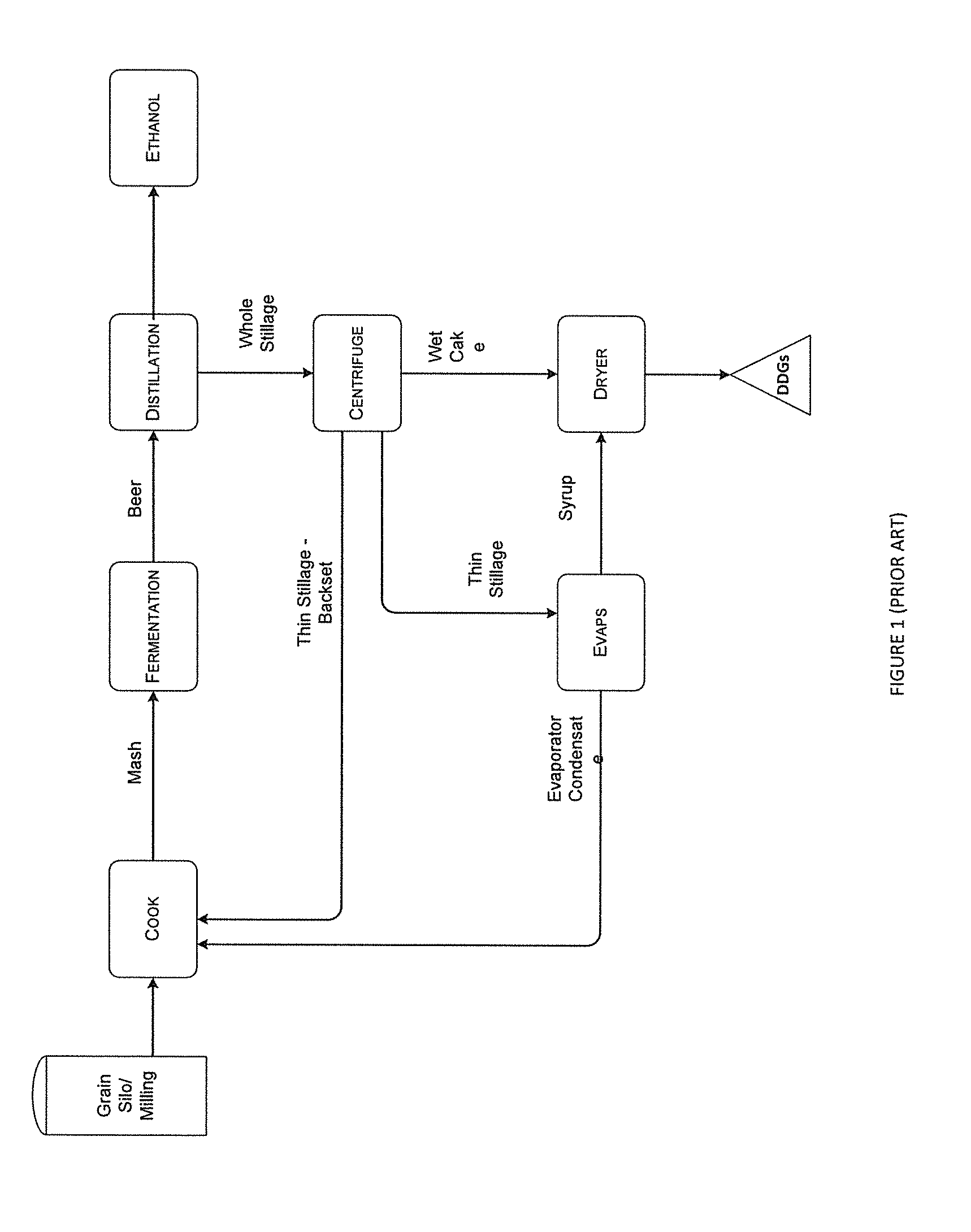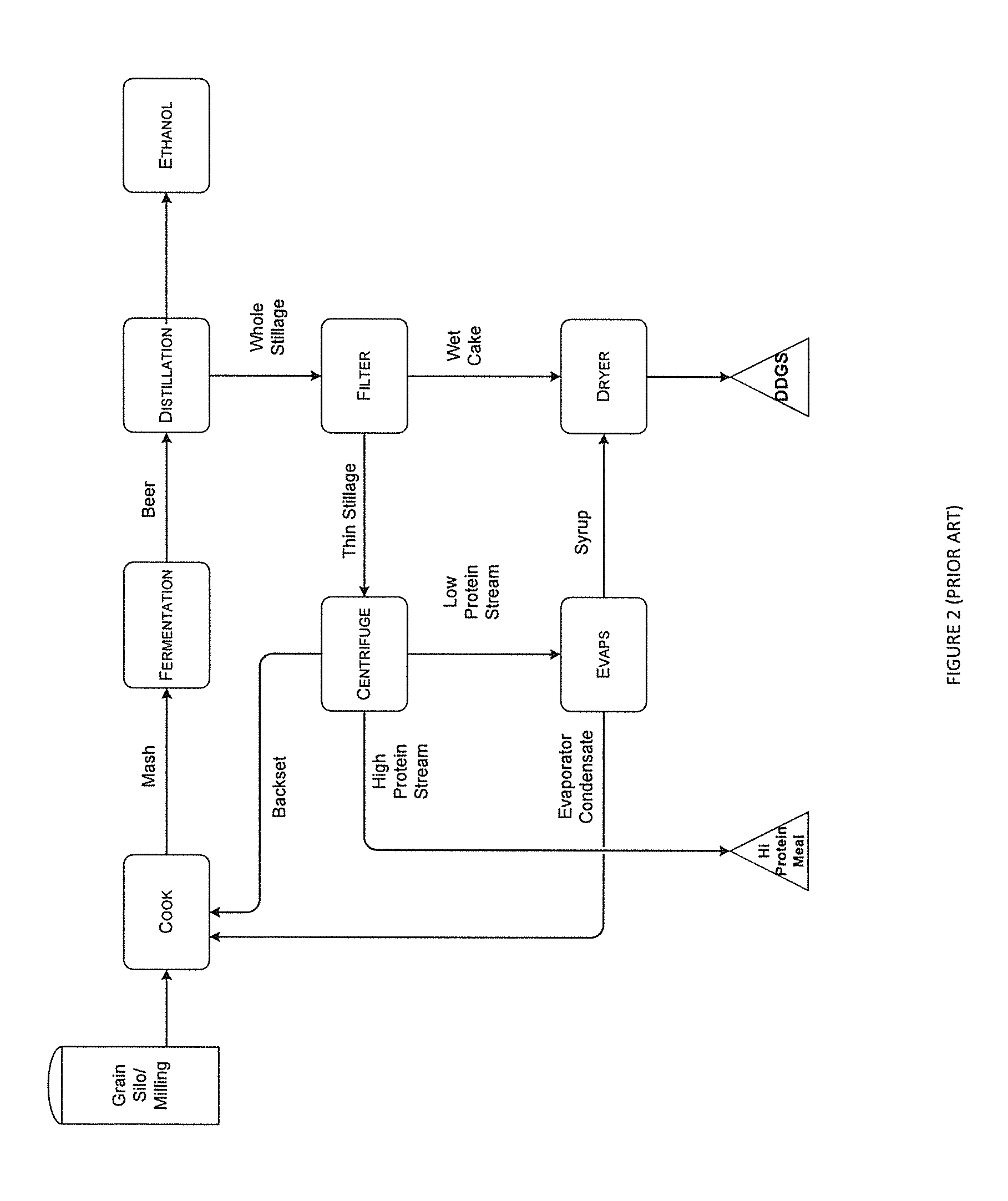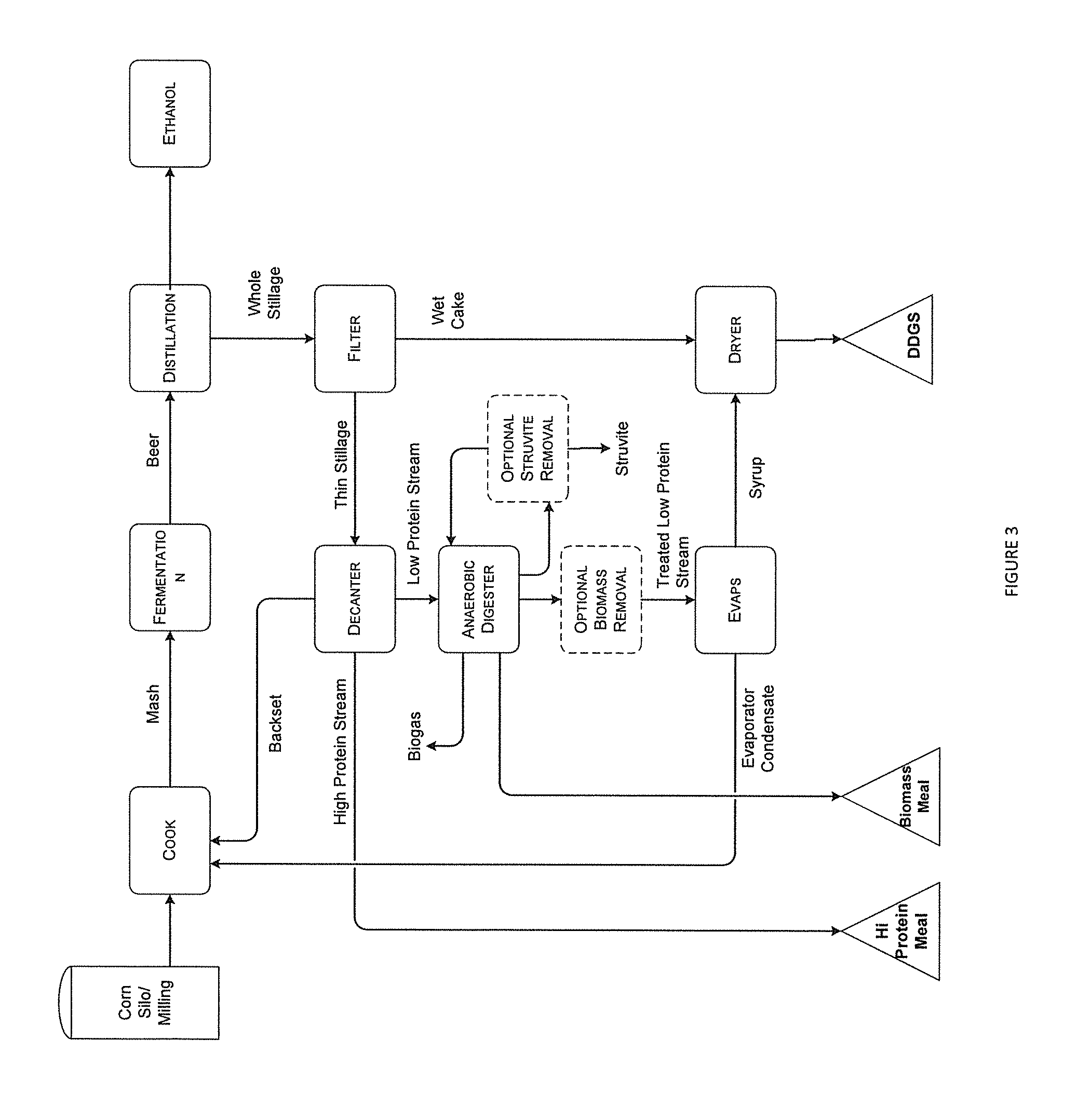Methods for managing the composition of distillers grain co-products
a technology of distillers and co-products, applied in the field of methods for managing the composition of distillers grain co-products, can solve the problems of reducing the protein content of stillage, avoiding the disclosure of distiller's grain co-products or production, and avoiding the use of digester effluent as a means to manage the protein content of multiple distillers grain co-products. , to achieve the effect of reducing protein thin stillage and achieving higher protein conten
- Summary
- Abstract
- Description
- Claims
- Application Information
AI Technical Summary
Benefits of technology
Problems solved by technology
Method used
Image
Examples
example 1
Analysis of Low Protein Stream
[0093]Procedures
[0094]For the present EXAMPLE 1, whole stillage obtained from a commercial ethanol plant was filtered through a 600 micron pan filter. The filtrate and retentate were collected. The filtrate was heated to 250° F. and held at that temperature for 40 minutes, then cooled to 180° F. The filtrate was then centrifuged to separate the filtrate into a high protein stream and a low protein stream. The filtrate, retentate, high protein stream, and low protein stream were analyzed. The results are summarized in TABLE 2 on a theoretical 100 kilograms whole stillage dry solids basis.
TABLE 2Stream Dry SolidsWeight based onProtein100 kg Wholewt %Product StreamStillage dry solids(dry basis)Whole Stillage100.025.90%Wet Cake46.029.20%Filtrate54.026.80%High Protein Fraction31.0541.50%Low Protein Fraction22.9511.30%WDGS (=Wet Cake + Low Protein68.9523.24%Fraction)
[0095]Results and Discussion
[0096]The separation of whole stillage into wet cake and thin sti...
example 2
Acid Hydrolysis of Wet Cake to Increase Protein
[0097]Procedures
[0098]For the present EXAMPLE 2, whole stillage obtained from a commercial ethanol plant was filtered through a 600 micron pan filter. The filtrate and wet cake (retentate) were collected.
[0099]Control: Approximately 50 g of wet cake (retentate) having a total solids concentration of 20 wt % was mixed with deionized water to form a 10 wt % slurry and then centrifuged in 50 mL conical tubes. The supernatant was carefully decanted and the pelleted solids were washed by re-suspending the pellet in approximately 1 volume of deionized water, centrifuging and decanting the supernatant. Samples of first supernatant, final pellet, and wash water were collected and analyzed for solids and protein content.
[0100]Treatment 1: Approximately 50 g of wet cake (retentate) having a total solids concentration of 20 wt % was mixed with deionized water to form a 10 wt % solids slurry. The slurry was heated to 100° C., stirred for 1 hour and...
example 3
Enzymatic Hydrolysis of Wet Cake to Increase Protein
[0104]In a proof of concept experiment, samples of wet cake having reduced protein content were prepared by the mechanical separation methods described below and then subjected to hydrolysis with cellulase enzymes only (no hemi-cellulase). Prior to hydrolysis, the wet cake was not subjected to any of the pretreatments common to cellulosic ethanol industry. In this embodiment, the hydrolysate is primarily comprised of glucose and is thus suitable for recycle to the same fermentation process from whence the wet cake was produced.
[0105]Supplemental Analytical Methods
[0106]Glucan composition of the wet cake (retentate) prior to hydrolysis was determined as glucose resulting from the NREL two-stage acid digestion method for structural carbohydrates. Reference publication: Sluiter et al., Determination of Structural Carbohydrates and Lignin in Biomass. Laboratory Analytical Procedure (LAP). National Renewable Energy Laboratory. Technical...
PUM
| Property | Measurement | Unit |
|---|---|---|
| temperature | aaaaa | aaaaa |
| temperature | aaaaa | aaaaa |
| temperature | aaaaa | aaaaa |
Abstract
Description
Claims
Application Information
 Login to View More
Login to View More - R&D
- Intellectual Property
- Life Sciences
- Materials
- Tech Scout
- Unparalleled Data Quality
- Higher Quality Content
- 60% Fewer Hallucinations
Browse by: Latest US Patents, China's latest patents, Technical Efficacy Thesaurus, Application Domain, Technology Topic, Popular Technical Reports.
© 2025 PatSnap. All rights reserved.Legal|Privacy policy|Modern Slavery Act Transparency Statement|Sitemap|About US| Contact US: help@patsnap.com



